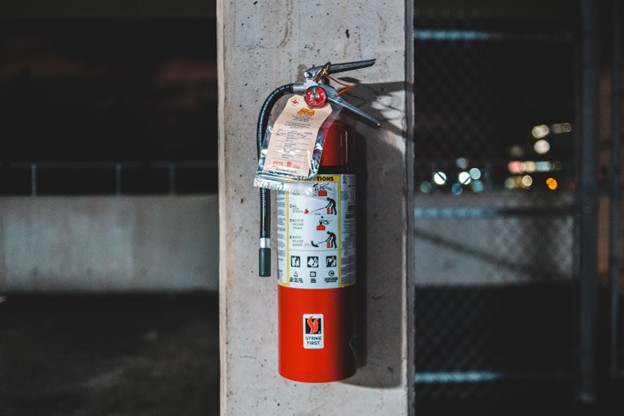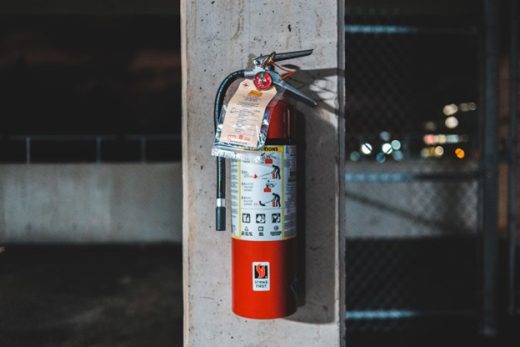How IoT is changing fire safety and prevention advice, Real estate H&S tips, Safe property guide
How IoT Is Changing Fire Safety & Prevention For The Better?
23 August 2023
The Internet of Things (IoT) has, undoubtedly, been the silent sentinel transforming our homes into dynamic hubs of connectivity, and our vehicles into responsive allies.
Yet, beyond the daily conveniences it offers, lies an application far more critical, and that is its evolving role in fire safety and prevention.
Picture this, a world where your home doesn’t just switch off lights on command, but also senses the minute fluctuations in heat or electric surges, alerting you to potential fire threats. Where buildings don’t just guide you to the nearest exit, but steer you clear from smoke-laden corridors during a fire.
This is not science fiction but the powerful promise of IoT, and while the appeal of a self-ordering refrigerator is not lost on many, the real marvel is how these connected devices are silently revolutionizing every aspect of personal safety.
Let us move beyond the surface glitz of IoT to delve into its profound impact in crafting a safer, fire-resistant world for us all.
1. Predictive Analytics: Catching Fire Before It Begins
IoT systems, connected with various sensors, collect vast amounts of data. This data, when processed using artificial intelligence (AI) and machine learning (ML), can lead to predictive analytics.
For instance, systems can monitor the health of electrical circuits, detecting overheating or potential malfunctioning components. By predicting possible fire threats before they become immediate hazards, IoT allows for timely intervention, reducing the chances of a fire breakout.
While suppression systems have done a great deal to save lives, a quick glance through the Lawsuit Legal News’ archives will unveiling an endless string of Aqueous Film Forming Foam (AFFF) Lawsuits, owing to its long-term impact on the health of individuals, as well as its role in degrading the surrounding environment.
2. Real-Time Alerts On Multiple Platforms
Traditional smoke detectors and fire alarms notify only the inhabitants of a building. In contrast, IoT-enabled devices can send real-time alerts to multiple stakeholders simultaneously – from building residents to property managers, security staff, and even local fire departments.
By ensuring that the right people get the information at the right time, the response can be more swift and efficient.
3. Automated Shut-Down Mechanisms
Certain fires, such as electrical fires, can be exacerbated by continuous power supply. Modern IoT systems can be programmed to automatically shut down electrical circuits or gas supplies when a potential fire threat is detected.
This not only helps in preventing the fire from spreading but might also stop the fire from starting in the first place.
4. Smart Evacuation Systems
In larger structures like commercial buildings and shopping malls, evacuating people quickly and safely is of utmost importance. IoT can help here as well.
By integrating with building management systems, IoT can guide occupants through the safest evacuation routes, avoiding areas with fire or heavy smoke.
Moreover, IoT devices can provide real-time data to emergency responders, ensuring they have up-to-date information on the situation within the building.
5. Integration With Sprinkler Systems
While traditional sprinkler systems are triggered by heat or smoke, IoT can make them more efficient.
For example, IoT-enabled sprinklers can be activated in specific zones where the fire is detected, ensuring water is directed precisely where needed. This not only conserves water but minimizes water damage in unaffected areas.
6. Continuous Maintenance Monitoring
One of the major causes of fire incidents is poorly maintained equipment. IoT offers continuous monitoring capabilities.
Whether it’s HVAC systems, electrical grids, or gas pipelines, IoT can ensure that these systems are operating optimally and can alert maintenance teams about potential issues that could lead to fire hazards.
7. Environmental Data Collection
By integrating with meteorological systems, IoT devices can also gather environmental data, such as temperature, humidity, and wind direction.
This can be especially useful for forest fire prevention, allowing authorities to predict fire-prone conditions and take necessary precautions.
Conclusion
IoT’s contribution to fire safety and prevention is undoubtedly transformative. By moving from reactive measures to proactive interventions, IoT ensures that potential fire threats are identified and dealt with before they escalate.
Moreover, in the unfortunate event of a fire, IoT can ensure a faster, more efficient response, minimizing damage and saving lives.
However, like all technologies, IoT’s effectiveness in fire safety is only as good as its implementation. Proper installation, regular maintenance, and continuous monitoring are essential.
But with these measures in place, there’s no denying that the future of fire safety, powered by IoT, looks brighter and far safer than ever before.
Comments on this guide to How IoT Is Changing Fire Safety & Prevention For The Better? article are welcome.
Fire Safety
Fire Safety Posts
Fire Safety Engineering for Buildings

How to make your house fire safe
Fire Damage Restoration and Remediation
Safety Precautions Against Home Fire
Fire-Safe Aluminium Rainscreen Cladding
Building Articles

image courtesy of article provider
Architects: BIG

image © Lucian R
The Plus Furniture Factory, Magnor
Comments / photos for the How IoT is changing fire safety and prevention advice page welcome








